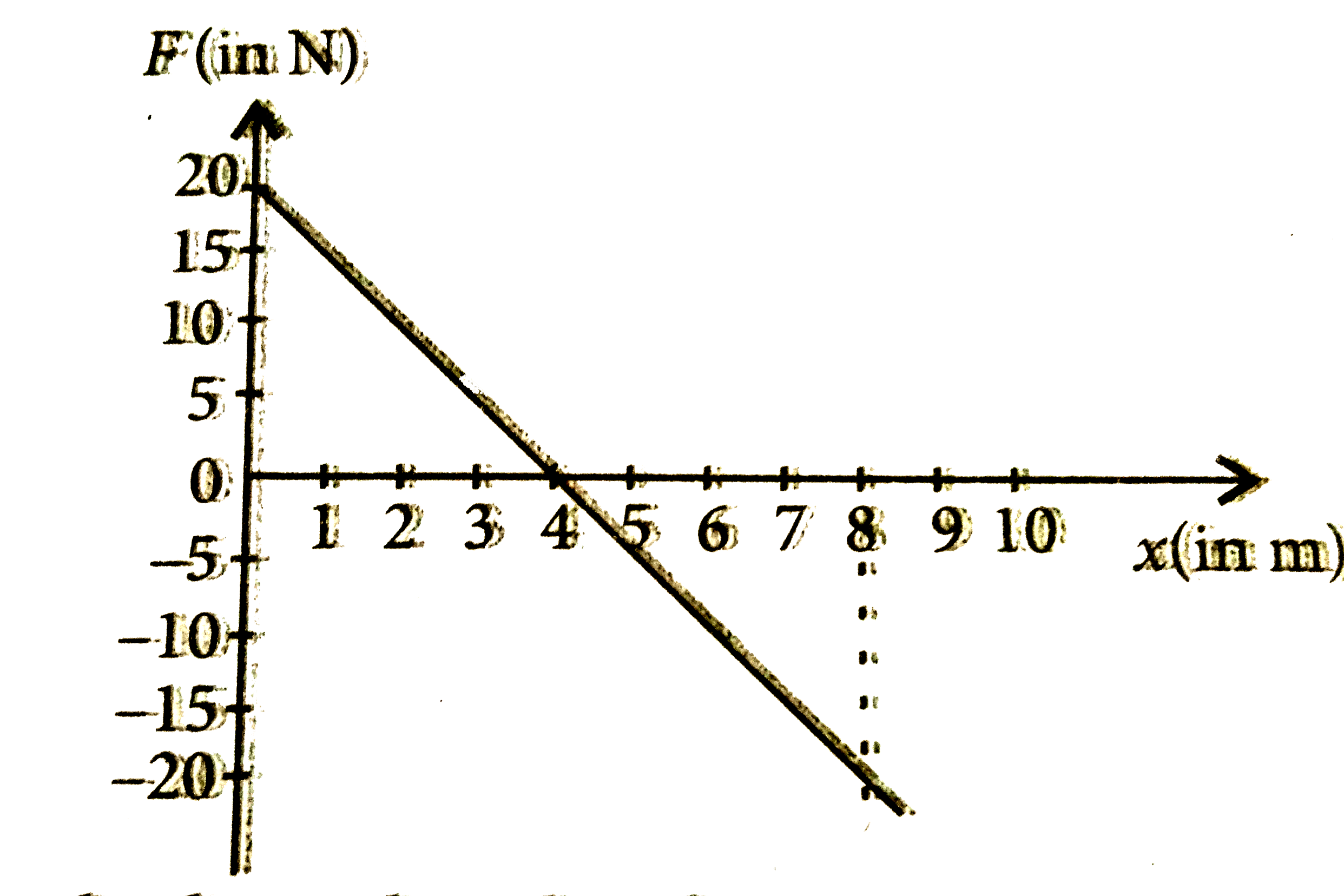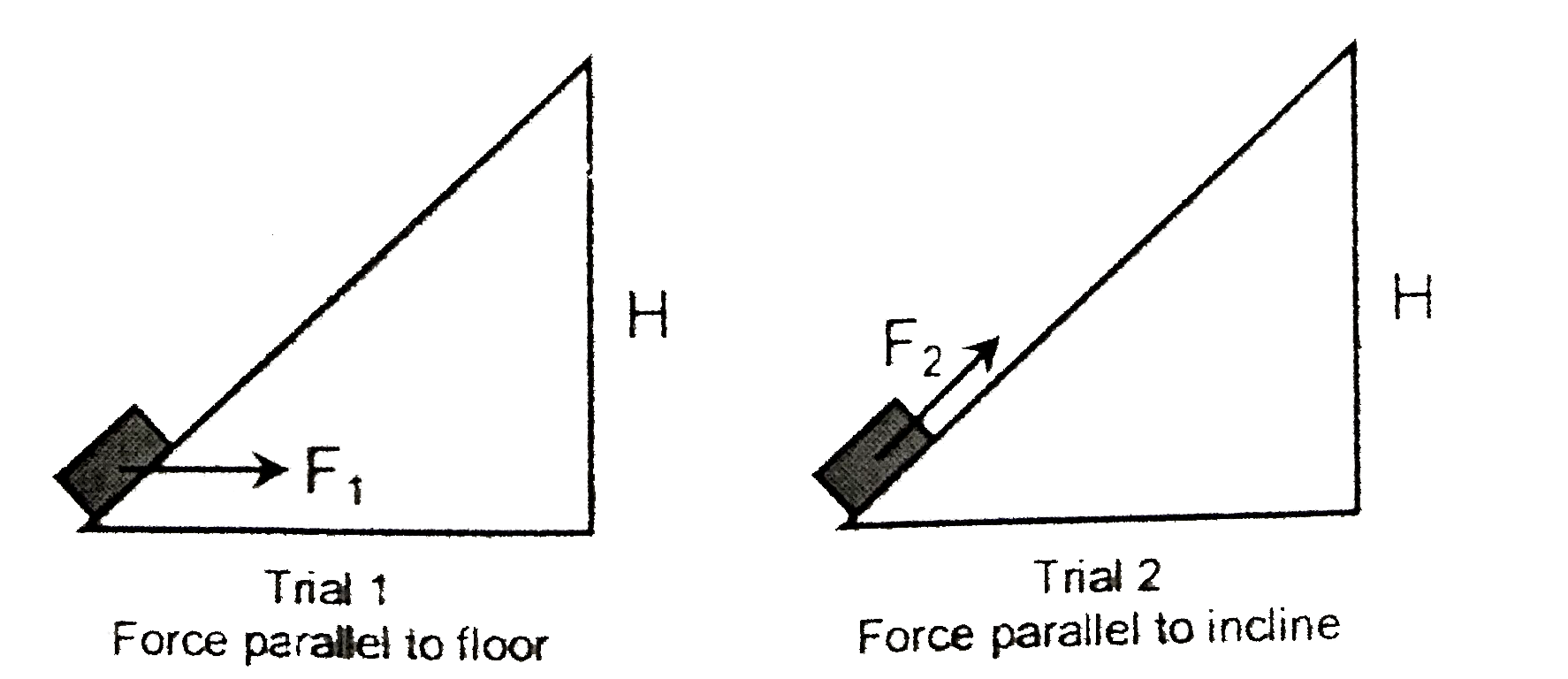A 0.50 kg object moves in a horizontal circular track of radius of 2.5 m. An external force of 3.0 N, always tangent to the track, causes the object to speed up as it goes around. The work done by the external force as the object makes one revolution is :
(a)24 J
(b)47 J
(c)59 J
(d)94 J
The correct Answer is:B
To solve the problem of calculating the work done by the external force on a 0.50 kg object moving in a horizontal circular track of radius 2.5 m, we can follow these steps:
1. Identify the Given Values:
- Mass of the object (m) = 0.50 kg
- Radius of the circular track (r) = 2.5 m
- External force (F) = 3.0 N (tangential to the track)
2. Calculate the Circumference of the Circular Track:
The distance traveled by the object in one complete revolution (circumference) can be calculated using the formula:
Circumference=2πr
Substituting the value of r:
Circumference=2×π×2.5
Circumference≈2×227×2.5≈15.71 m
3. Calculate the Work Done by the External Force:
The work done (W) by the external force when the object makes one complete revolution can be calculated using the formula:
W=F×d
where d is the distance traveled (circumference). Thus,
W=3.0N×15.71m
W≈47.13J
4. Final Result:
The work done by the external force as the object makes one revolution is approximately:
W≈47J
Conclusion:
The work done by the external force is approximately 47 Joules.
---
- Mass of the object (m) = 0.50 kg
- Radius of the circular track (r) = 2.5 m
- External force (F) = 3.0 N (tangential to the track)
The distance traveled by the object in one complete revolution (circumference) can be calculated using the formula:
Circumference=2πr
Substituting the value of r:
Circumference=2×π×2.5
Circumference≈2×227×2.5≈15.71 m
The work done (W) by the external force when the object makes one complete revolution can be calculated using the formula:
W=F×d
where d is the distance traveled (circumference). Thus,
W=3.0N×15.71m
W≈47.13J
The work done by the external force as the object makes one revolution is approximately:
W≈47J
The work done by the external force is approximately 47 Joules.
Topper's Solved these Questions
- ENERGY & MOMENTUMBook:VMC MODULES ENGLISHChapter:ENERGY & MOMENTUMExercise:Level - 1 PARAGRAPH QUESTIONS
Explore 3 Videos
- ENERGY & MOMENTUMBook:VMC MODULES ENGLISHChapter:ENERGY & MOMENTUMExercise:LEVEL - 2
Explore 48 Videos
- ENERGY & MOMENTUMBook:VMC MODULES ENGLISHChapter:ENERGY & MOMENTUMExercise:LEVEL - 0 - LONG ANSWER TYPE
Explore 5 Videos
- ELECTROSTATICSBook:VMC MODULES ENGLISHChapter:ELECTROSTATICSExercise:JEE Advanced (Archive)
Explore 89 Videos
- GASEOUS STATE & THERMODYNAMICSBook:VMC MODULES ENGLISHChapter:GASEOUS STATE & THERMODYNAMICSExercise:JEE ADVANCED (ARCHIVE )
Explore 111 Videos
Similar Questions
An object of mass m moves with constant speed in a circular path of radius r under the action of a force of constant magnitude F. the kinetic energy of object is
View SolutionA force F acting on an object varies with distance x as shown here.

The force is in N and x in m. The work done by the force in moving the object from x = 0 to x = 6 m is
View Solution
Knowledge Check
A vertical force F of strength 20 N acts on an object of mass 3 kg as it moves a horizontal distance of 4 m. the work done by the vertical force is equal to
A0JB60JC80JD600JA force F acting on an object varies with distance x

The work done by the force in moving the object from x=0 to x=8 m isAzeroB80 JC−40JD40JA force F acting on an object varies with distance x as shown in the figure. The work done by the force in moving the object from x=0 to x = 20 m is
 A500 JB1000 JC1500 JD2000 J
A500 JB1000 JC1500 JD2000 J
A small object of mass 'm' is moved over a rough, curved surface as shown. The force which moves it along the dotted path shown is always tangential to the curved path. If the object moves with negligible speed, find the work done by the force F in moving it from A to B. The coefficient of friction between the object and the curved surface is μ.

View SolutionA body of mass 2 kg is moved from a point A to a point B by an external agent in a conservative force field. If the velocity of the body at the points A and B are 5m/s and 3m/s respectively and the work done by the external agent is - 10 J, then the change in potential energy between point A and B is
View SolutionA car moving along a circular track of radius 50.0m acceleration from rest at 3.00ms2 Consider a situation when the car's centripetal acceleration equal its tangential acceleration
View Solution
An object of mass M starts from rest at the bottom of a fixed incline of height H. A person decides to push the object up the incline in one of two ways with an applied force shown in the diagram. In each of the trials, the object reaches the top of the incline with speed V. How would the work done by the person on the block compare for the two trials? Assume the same constant non-zero coefficient of kinetic friction between the incline and the object for both trials.
View SolutionAn object of mass m is travelling at constant rate b in a circular path of radius r. how much work is done by the centripetal force during one half of a revolution?
View Solution